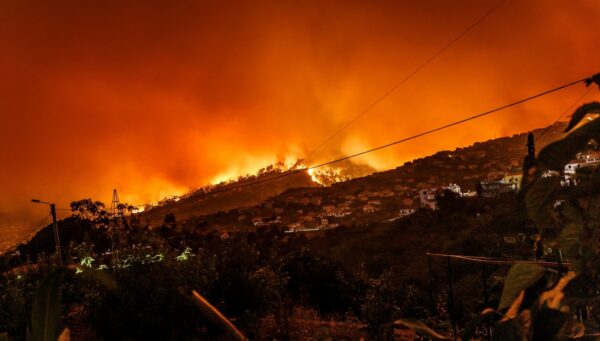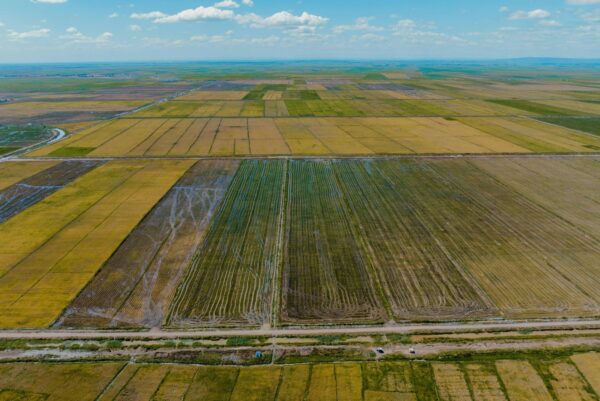Overview briefing on the IPCC Special Report on Climate Change and Land
Authors
Carl-Friedrich Schleussner, Alexandrine Lanson, Susanne Baur, Claire Fyson, Thessa Beck, Corinne Kowalski, Alexander Nauels
Share

The IPCC Special Report on Climate Change and Land outlines how land is subject to human pressure in the Anthropocene. This report is a brief on the contents on this report.
Land is under growing human pressure at 1°C of warming to date
The IPCC special report on climate change and land (full name “Special Report on climate change, desertification, land degradation, sustainable land management, food security, and greenhouse gas fluxes in terrestrial ecosystems”) outlines how land is subject to human pressure in the Anthropocene. A quarter of land is already considered degraded, nearly three quarters of it is exploited or occupied (agriculture, pasture, forestry, etc.) and two thirds of the forests are managed (e.g., timber extraction or recreational uses), leaving less than a quarter of this land free of direct human influence. At about 1°C of global warming, widespread impacts are already affecting land. The frequency, intensity and duration of many extreme events have increased in many parts of the world, especially heat waves, droughts and heavy precipitation events. The impacts of these effects are already seen through land and terrestrial ecosystems degradation, desertification and increasing food insecurity. Desertification hotspots extended to about 9% of drylands, affecting about 500 (±120) million people in 2015. 500 million people would equate to the inhabitants of Brazil and the US combined.
Land based emissions contribute about a quarter to the ongoing climate change
While industrial activities remain the dominant factor in the increase of greenhouse gases in the atmosphere, all land-use activities, particularly deforestation and agricultural activities, contribute to about a quarter of these emissions (over the 2007-2016 period). In total, between 21-37% of global greenhouse emissions are attributable to the food system, a significant part of which is wasted. Global food loss and waste amount to 25-30% of total food produced and equaled 8-10% of total anthropogenic GHG emissions during 2010-2016. Without interventions these are projected to increase significantly.
Climate impacts on land accelerate at an alarming pace above 1.5°C
Widespread climate risks and impacts increase at an alarming pace above 1.5°C. Risks for permafrost degradation are already high at 1.5°C and assessed very high if warming exceeds 2°C, indicating great risks of irreversible losses. Risks for wildfire damage are assessed high above 1.5°C and the chances of experiencing high risks for vegetation loss, dryland water scarcity and tropical crop yield decline increase rapidly above 1.5°C. Risks for food system instabilities with periodic food shocks across regions are high already at 1.5°C with rapidly increasing chances of very high risks of sustained global food supply disruptions above 1.5°C. More than 1 billion people (3 times the US population) could be exposed to various impacts related to water, energy and land sectors under a 2°C warming by mid-century, of which more than 200 million would be highly vulnerable to its impacts. Food insecurity is a critical ‘push’ factor driving international migration.
Future climate impacts strongly depend on different socio-economic drivers of development poverty eradication, international cooperation and sustainability concerns. A scenario that resembles most closely the globally inclusive, solidaric and sustainable approach required to achieve the SDGs (the so1called SSP1 scenario) will help to avoid the most severe impacts on land systems and vulnerable populations, while in a world of regional rivalry, these will be strongly exacerbated.
Land has a crucial role to play in climate mitigation
Key land based measures are required to achieve the goals of the Paris Agreement and there is a huge potential for behavioural shifts identified, too. Reduced deforestation and forest degradation could save 0.4-5.8 GtCO2-eq yr-1 , a shift towards plant-based diets 0.7-8.0 GtCO2-eq yr-1 and reduced food and agricultural waste 0.8-4.5 GtCO2-eq yr-1 . For comparison purposes; in 2010 the whole transport sector produced 7.0 GtCO2-eq of direct GHG emissions.
A broad range of response options based on land management have been identified that have multiple co-benefits across the dimensions of mitigation, adaptation and desertification, land degradation and food security. However, the efficacy of many of these options – often referred to as ‘nature based solutions’ – will be limited under higher levels of warming, meaning that they must be accompanied by rapid emissions reductions in other sectors consistent with limiting warming to 1.5°C.
A contribution of land-based options for carbon dioxide removal such as biochar addition to soil, reforestation, afforestation, agroforestry, soil carbon management and bioenergy with carbon capture and storage (BECCS) is required in Paris-compatible mitigation pathways. Sustainable best practice applications for all these options have been identified that should be the focus of their deployment. Large-scale deployment of land-based mitigation options beyond sustainability limits could have substantial negative side-effects on a sustainable land future including food security and biodiversity conservation. Furthermore, accumulated carbon in many land-based sinks (see carbon sink) is vulnerable to future climate change impacts. It is thus of paramount importance to limit the future reliance on carbon dioxide removal through stringent near-term emission reductions.
Urgent near-term mitigation action is key
Widespread land-based impacts of climate change are evident today and will become ever more severe over the coming decades. On the current emissions trajectory, a warming of 1.5°C would be exceeded before mid-century, with respective high and potential very high impacts across a whole range of identified land-based risks. Stringent near-term mitigation to slow the rate of warming in the coming decades, to achieve net-zero CO2 emissions by mid-century and to limit global temperature increase to 1.5°C is therefore key to avoid the ever accelerating impacts of climate change on land. The longer action is delayed, the more we risk crossing points of no return, such as irreversible land degradation in some regions, and the more the implementation of solutions will become less effective, such as for carbon sequestration in soils. Furthermore, stringent near-term emission reductions are key to reduce an undue reliance on potentially unsustainable large-scale carbon dioxide removal. At the same time, questions of carbon dioxide removal raise fundamental concerns of equity and fairness. Literature published beyond the IPCC special report outlines, how applying equity principles clearly outlines the responsibility of historic emitters for carbon dioxide removal. For historical big emitters such as the US, China or the EU, failing to reduce emission levels in 2030 to 1.5°C compatible levels, generates about 20–70 additional gigatons of CDR responsibility over this century per tonne of excess emissions in 2030.













